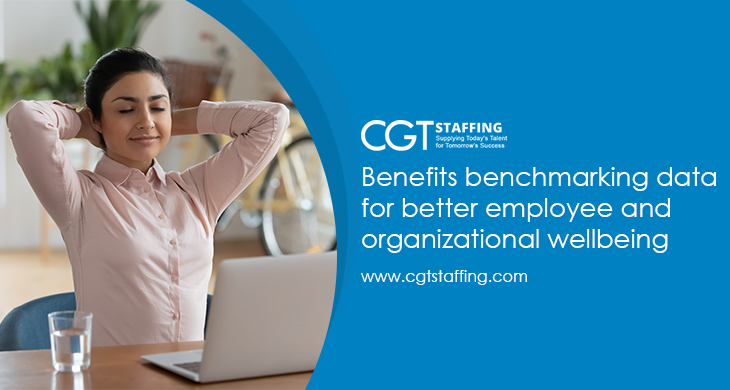In virtually all industries and sectors, the competition is intense. Competitors of all sizes are fighting over a greater share of the pie. And as all good employers know, having the right talent on your team is key to outperforming the competition. But the market share isn’t the only thing other businesses are competing with you for. In many cases, they also compete over the same talent pool. Many professionals, such as mortgage headhunters, are hired specifically to track down and engage with the best talent available.
Many times, this talent is already employed by another business, which could easily be yours. If you’re not offering them enough benefits relative to another competitive offer presented to them, you risk losing your best performers. Employee benefit benchmarking can go a long way to help you understand where your business stands in terms of benefits when compared to other competing businesses. This blog will show you how.
Table of Contents
What Is Employee Benchmarking?
Modern employers frequently use benchmarking as a way to determine sustainable and fair benefits for their workforces. The timing of the benchmarking may vary. Certain employers periodically revise benchmarks every two or three years. This can often be part of good governance efforts on part of the employer. Employers may also use benchmarking when filling specific roles, staffing new divisions, or hiring a particular candidate.
These benchmarks are useful not just to the employer, but to third-party services involved in the hiring process as well. For example, IT staffing agencies make use of benchmarking data to make more appealing offers to candidates.
Benchmarking data can come from a mix of sources. Publically available industry information will certainly play a part, but you may also have to acquire proprietary information. Sometimes, acquiring this information can prove to be a significant expenditure. The benchmarking process cannot be effective without it, however.
Benchmarking varies from industry to industry, which means it may be a good idea to seek consultations for specialized roles with stakeholders like your marketing staffing agency. The advantages of employee benefit benchmarking apply to both employers and employees. Read on to learn more about them.
Compare and Competitively Adjust Your Benefits Plan
Instead of a broad approach to benefits benchmarking, granular data can often prove to be most effective. It can be costly, but it offers a lot in return. Granular data can be segmented by industry, geography, or job roles. This information can help you discover any gaps in your benefit plans that are proving to be effective (or a challenge) in terms of hiring and retention.
Measure the Return on Investing In Employee Benefits
Offering employees fair and appropriate benefits in return for their services is important. But you should also know whether the benefit costs are offering sufficient returns to your business. For example, is your employee retention rate satisfactory? Is your workforce morale sufficiently high? Measurement tools such as employee performance appraisals can also offer insights into what your workforce values. This information along with other benchmarks can help you determine what areas of benefits need investment to generate the most ROI.
Learn About Unrecognized but Significant Competitors
Employers often develop a rigid idea of which businesses in their niche qualify as direct competitors. Very often, this is limited to businesses with the biggest market share. However, benefits benchmarking data may show you that you need to cast a wider net. The benchmarking process can often reveal businesses that may be competing far more closely with you than you realized.
Leverage Benchmarking to Boost Employer Brand
Benchmarking data shouldn’t be limited to internal use. If the quality of the benefits you offer is better than the industry benchmark, it can be a very valuable part of your employee value proposition. At the same time, it can offer a significant boost to your employer brand. Popular professional networking services like LinkedIn and Glassdoor offer the perfect platforms to promote your company.
Offering benefits above the industry benchmark is attractive as is. But these platforms also have sections where employees can discuss the company (and its benefits) anonymously. This is the kind of buzz every employer wants to generate.
If employee morale is still lagging after revising your benefit structure relative to the industry benchmarks, it could mean you need to build awareness in your workforce. From permanent staff to contract-to-hire workers, make efforts to ensure everyone understands how you offer more value than other employers. Obviously, this will also improve workforce morale in the long term.
